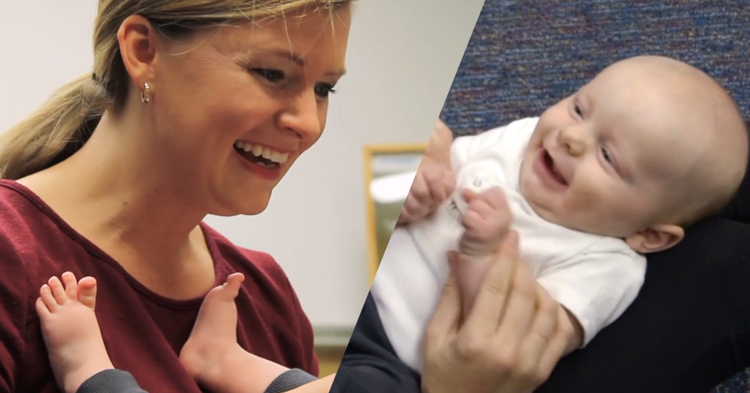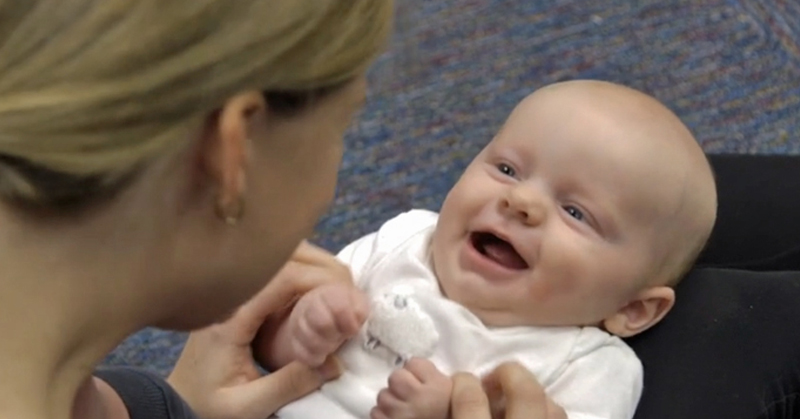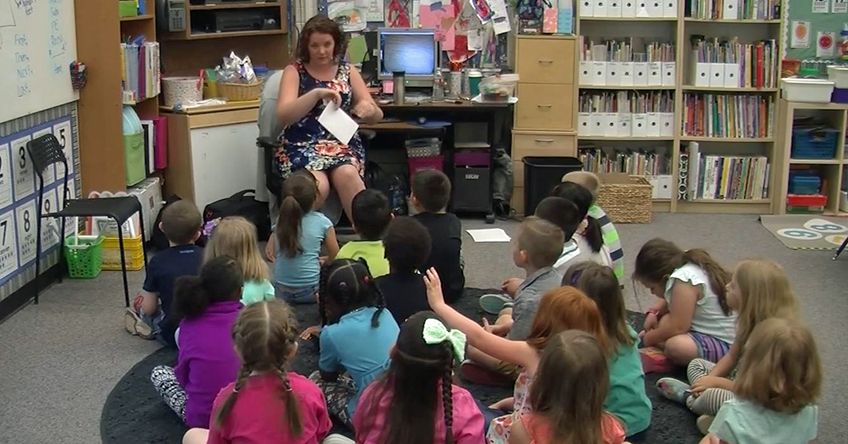
Holding my new baby nephew was an emotional experience knowing that I was going to miss out on so much of his life. My husband and I were moving nearly 2,000 miles away, but we were determined to find ways to form a relationship with the little guy.
Not being there to see young kids grow can be hard on any family member. Like many long-distance relatives, we have resorted to using FaceTime — our favorite real-time chat technology — to help us stay in touch. The past six months of screen-time interactions with our nephew have been great for my husband and me, but they’ve led me to wonder how well they work for him. Will FaceTime and phone calls really help us to develop a relationship from across the country? And are they good for him?
Well, there’s good news for all those grandparents, military families and long-distance relatives and friends: video chat isn’t only for your benefit. Studies show that infants as young as six months are actually emotionally engaged with real-time video chat.
What About Screen Time Concerns?
Because of the American Academy of Pediatrics’ longstanding “no-screen rule” for babies under age 2, parents might be hesitant to expose their babies to screen time even if Grandma is on the other end. But the AAP recently revised their guidelines, and while they still recommend no screens for babies younger than 18 months, they make one exception: live video chat.
Why are video-chat technologies like FaceTime , Skype and Google Hangout an exception for infants? Because they allow the kind of responsive interactions that are so good for helping babies develop language. When the baby communicates through nods, gestures or expressions, they are able to see that the person on the other end is responding to them. Researchers have found that video chat makes it easier for babies to have back-and-forth communication than regular phone calls.

Tips to Make Your Video Chat More Engaging
- Give screen kisses. Give the infant affection through the screen and encourage them to give affection back. Blowing screen kisses is especially helpful if the parent actually kisses the baby while the person on the screen is blowing a kiss. This helps the baby understand that the interaction is real.
- Share food. Babies also like to share things through the screen, particularly food,” McClure said. “They like to try to feed their grandparents. Then [the grandparents] pretend to receive the food on the side and eat it.” While it might feel silly to pretend the baby is feeding you, think of it as another way to help develop your relationship.
- Tell bedtime stories. Read a book to the child while their caregiver on the other side is holding the same book for them to see the pictures. Describe the pictures the baby is seeing in detail.
- Get at eye level. The caregiver should position the baby so that they can make eye contact with the person on the screen, making it as normal an interaction as possible.
- Be consistent. Make video chat a regular event so it becomes part of the baby’s routine. Make it seem normal, not over or undervalued, but something that is a regular part of their life.
- Work with the technology. Choose mobile rather than desktop for the baby. All the buttons at a desktop computer can be distracting to the baby and take away from the interaction. Lag time and glitches in technology can also hinder the experience for the infant. If Grandma is frozen on the screen, whoever is holding the baby should explain that the internet isn’t working correctly.
It’s not easy to be so far away from your newest and youngest relatives, but there’s never been a better time for long-distance relatives to maintain strong relationships. My husband and I have been able to see our nephew roll around, make funny faces and spit up a few times, all through our cell phones. Thanks to modern technology, we can interact with him, admire his cuteness and watch others tackle the parenting.





